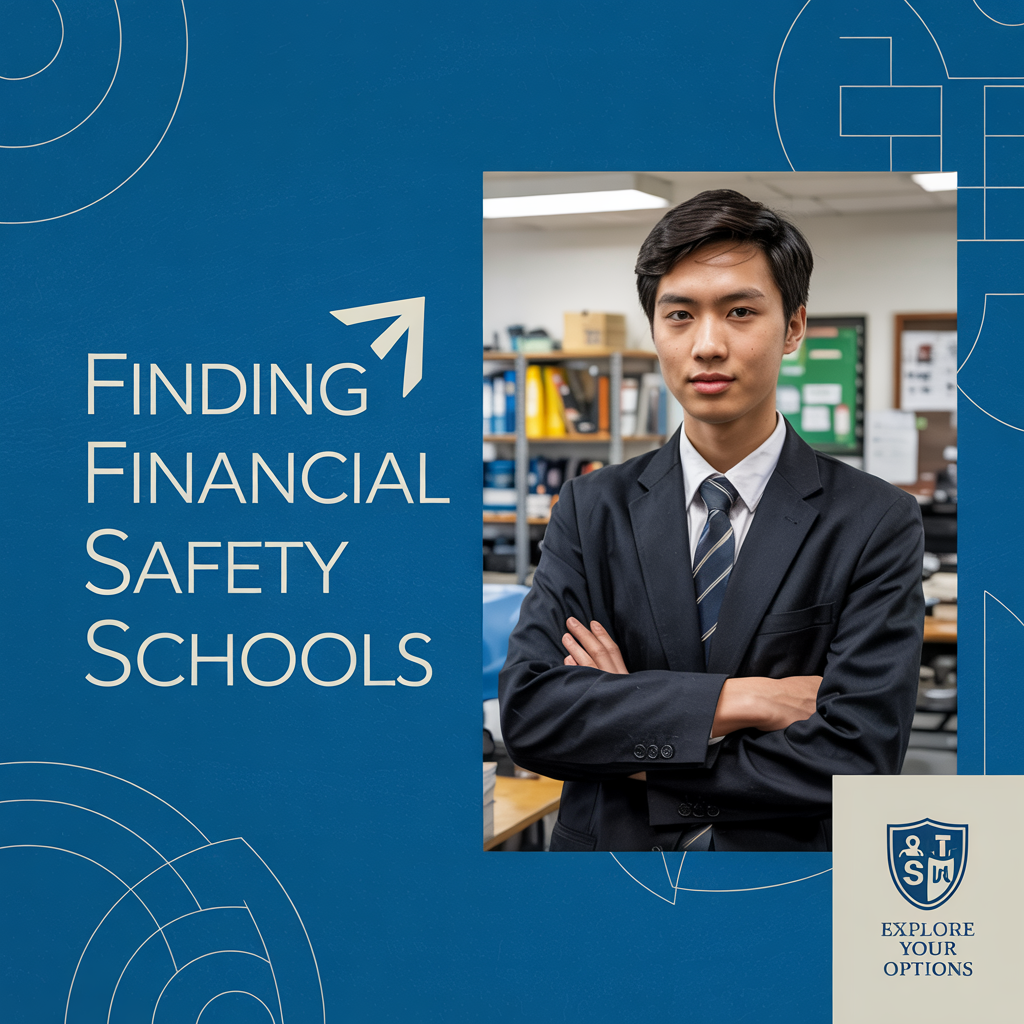Financial Safety Schools: How to Identify Them & Why They’re Non-Negotiable

When building your college list, you probably think about “safety schools” – places where you’re very likely to get accepted. That’s important! But there’s another crucial layer: financial safety schools. These are colleges that your family can likely afford even before considering need-based financial aid or competitive scholarships. Identifying these schools is a non-negotiable part of smart college financial planning. Let’s dive into how to find them.
💡Pro tip: Use Cirkled In to track your achievements and stand out for merit scholarships that can make college more affordable.
What Makes a School a TRUE Financial Safety?
A true financial safety school meets two criteria:
- High Likelihood of Admission: Your academic profile (GPA, course rigor, test scores if applicable) is well above the average for admitted students at that school. Admission feels very probable, almost certain.
- High Likelihood of Affordability: This is the key often missed. It means the net price – the estimated cost you’d actually pay after grants and scholarships you are likely to receive automatically – is manageable for your family without relying on large loans or aid you might not get.
Think of it this way: It’s a school you can almost certainly get into AND almost certainly afford.
Why Admission Safety Isn’t Enough
Many students list schools as safeties based only on admission chances. They get accepted, only to find out the cost is way too high, even with some financial aid. This leads to disappointment and stressful decisions later. Focusing only on admission ignores the huge financial piece of the puzzle. You need schools on your affordable college list before worrying about a potential need-based aid lottery.
How to Identify Potential Financial Safety Schools
Finding these schools requires research focused on cost and automatic aid:
- In-State Public Universities: Often the most affordable option for residents due to lower tuition rates. Research your state’s public colleges and universities.
- Colleges with Large Automatic Merit Scholarships: Some colleges offer guaranteed merit scholarships based purely on meeting certain academic criteria (GPA/test scores). If your stats qualify you for significant automatic aid that brings the cost down to an affordable level, it could be a financial safety.
- Commuter Options: Could you live at home and commute to a local college? This drastically reduces room and board costs.
- Community Colleges: Starting at a community college for two years and then transferring is a very common and affordable pathway.
Focus on the sticker price minus aid you are very likely or guaranteed to receive.
Using Net Price Calculators: Your Best Friend
This is the MOST important tool for identifying financial safeties. Every college website is required to have a Net Price Calculator (NPC).
- What it does: You enter your family’s financial information (similar to FAFSA) and sometimes your academic stats. The NPC estimates the net price you would actually pay after estimated grants and scholarships from that specific college.
- How to use it: Run the NPC for EVERY college you are considering, especially potential safeties.
- Compare Results: The estimated net price gives you a much realistic idea of affordability than the sticker price. Use this number to determine if a school is truly financially safe.
Don’t rely on sticker prices alone! Use the NPCs.
Considering State Residency and Guaranteed Aid
- In-State Tuition: As mentioned, public schools usually offer significant tuition discounts for state residents. This is often the easiest path to affordability.
- Guaranteed Scholarships: Some states or specific public universities have programs guaranteeing admission and/or specific scholarships if you meet certain criteria (e.g., top percentage of your high school class, specific GPA/score thresholds). Research these for guaranteed admission and affordability.
- Reciprocity Agreements: Some neighboring states have agreements allowing residents to attend public schools in the other state at reduced tuition rates (though often not as low as in-state).
Why Financial Safeties are Non-Negotiable
Having at least one, preferably two, true financial safety schools on your list provides:
- Peace of Mind: You know you have an affordable option no matter what other acceptances or aid packages look like.
- Reduced Stress: Avoids panic if your top choices don’t offer enough aid.
- Bargaining Power (Sometimes): A solid affordable offer can sometimes be used (carefully) to negotiate with other colleges.
- Smart Financial Decision-Making: Prevents taking on excessive student loan debt.
💡 Explore platforms like Cirkled In where students can showcase their full potential—not just grades—to open up more scholarship and affordable college options.
Final Thought: Plan for Affordability First
Building a balanced college list means considering academics, fit, and finances from the start. Don’t wait until acceptance letters arrive to think about cost. Actively research and identify true financial safety schools – places you’re likely to get into AND likely afford based on net price calculators and automatic aid. Making finding affordable colleges a priority ensures you’ll have great, financially viable options come decision time.
Need more tips on college applications, scholarships, or just how to survive this whole process? Cirkled In has your back—check out Cirkled In resources to help you through every step of your college journey!
Check out Cirkled In and start owning your future today!



0 Comments